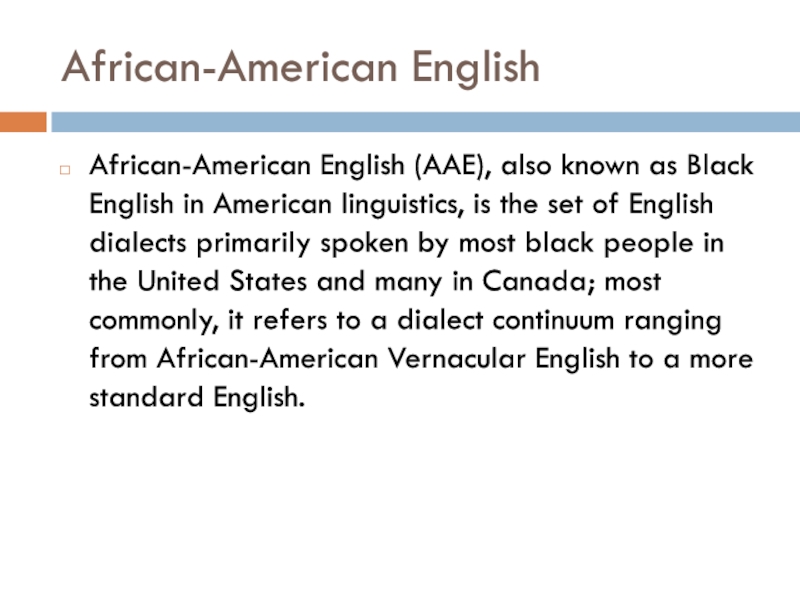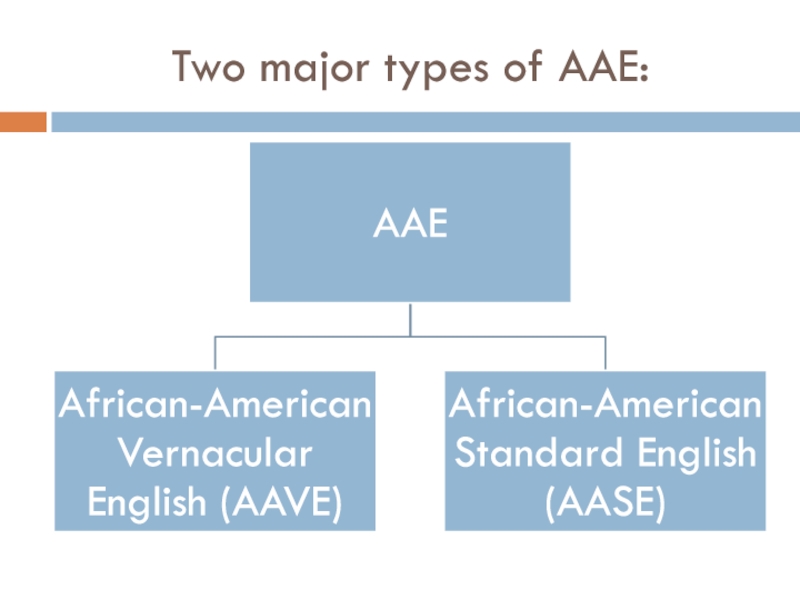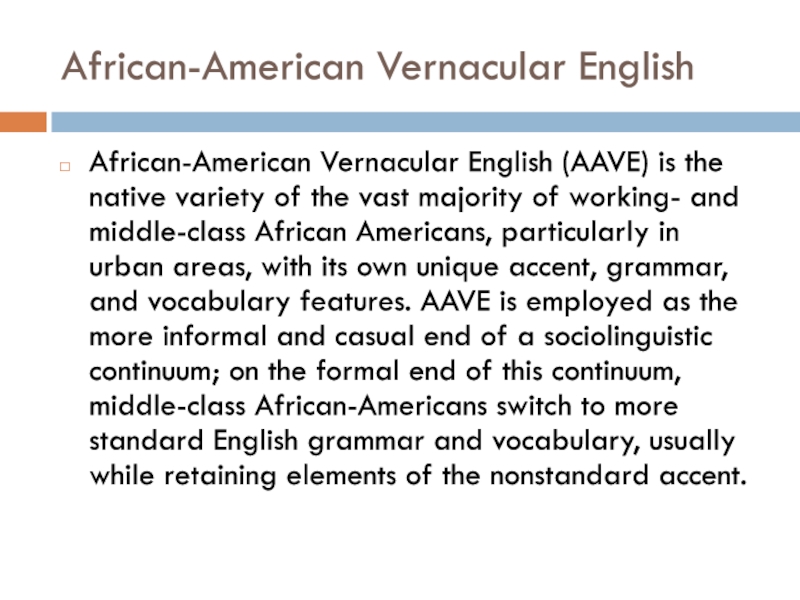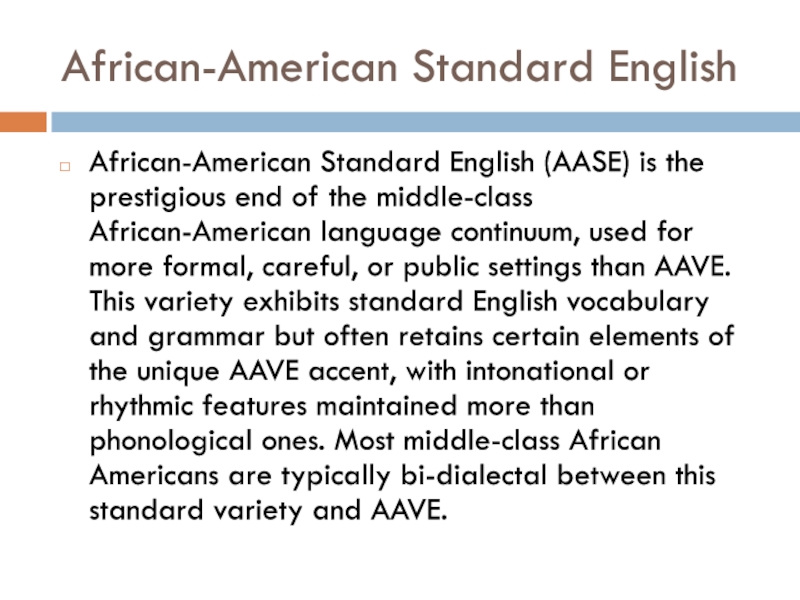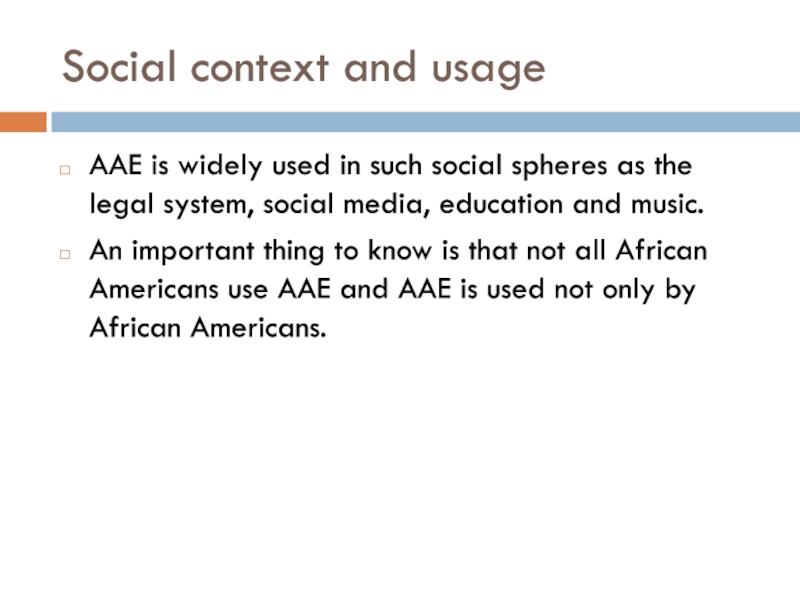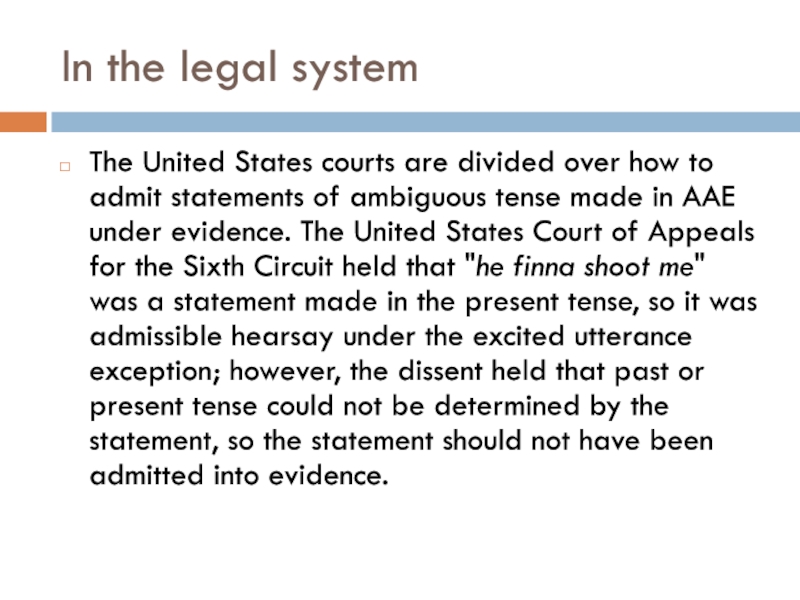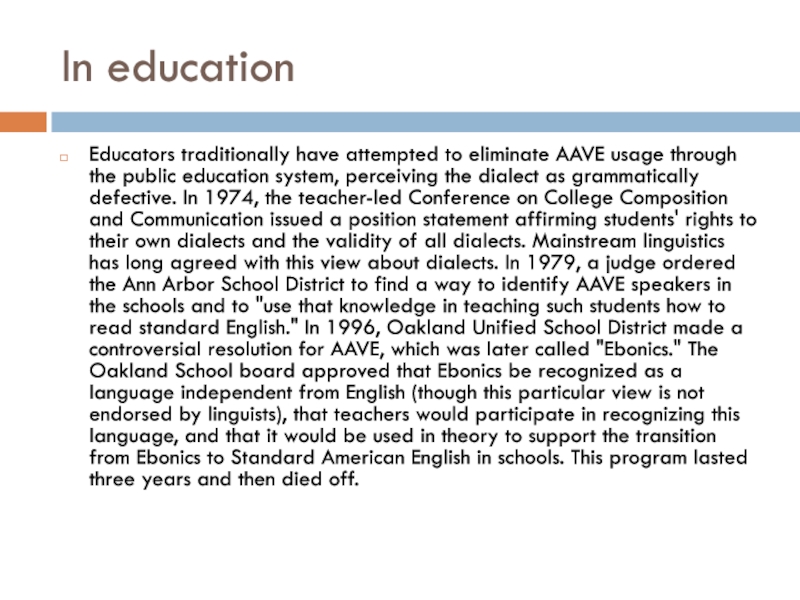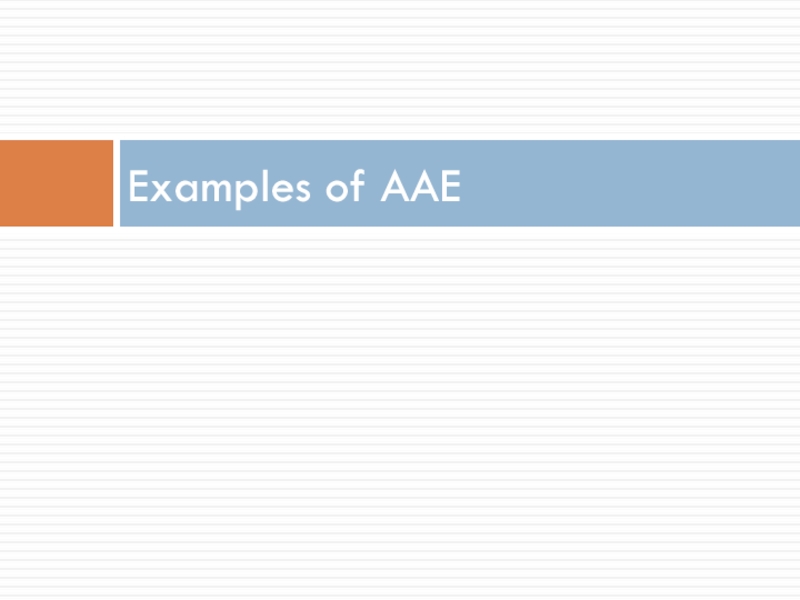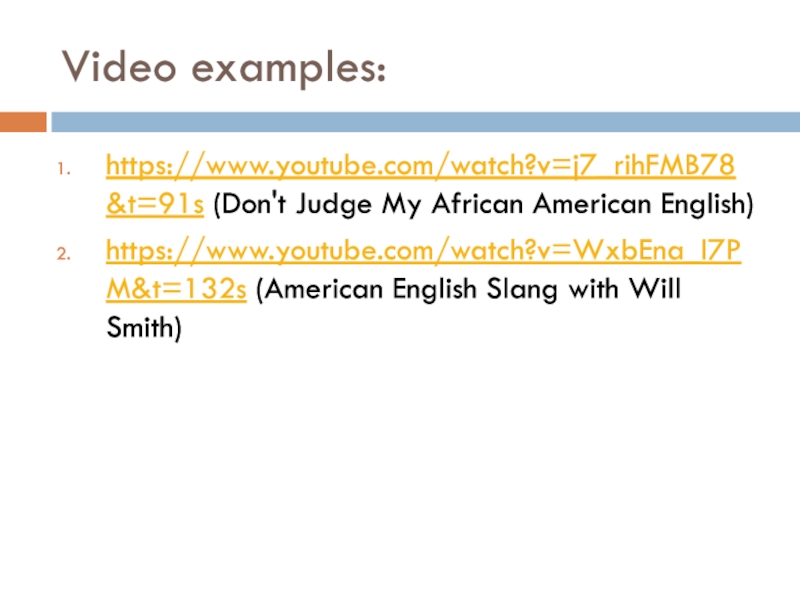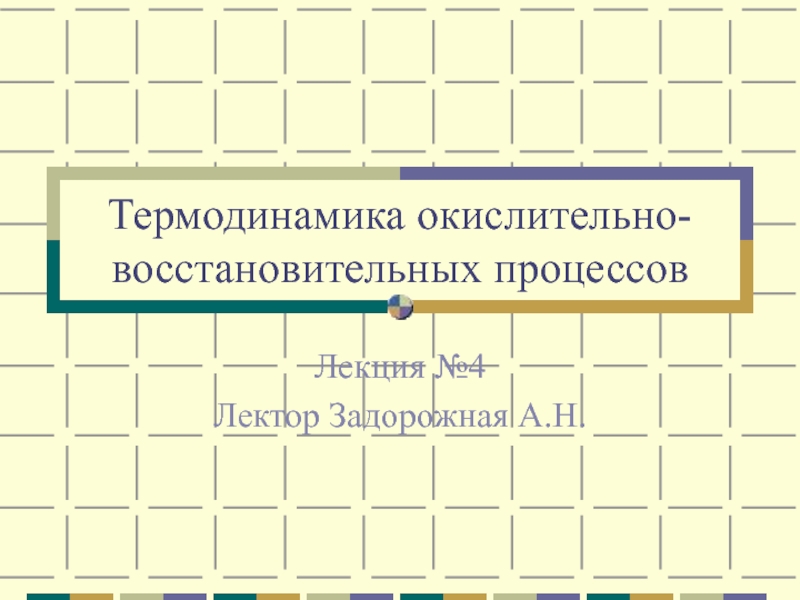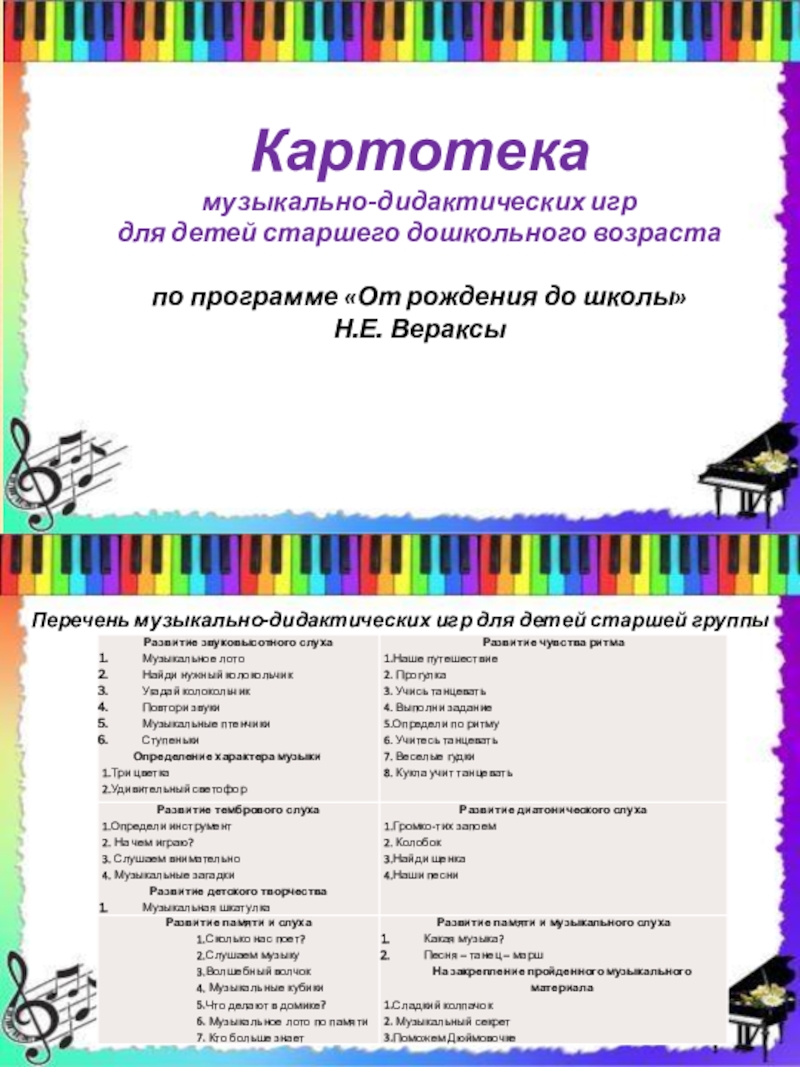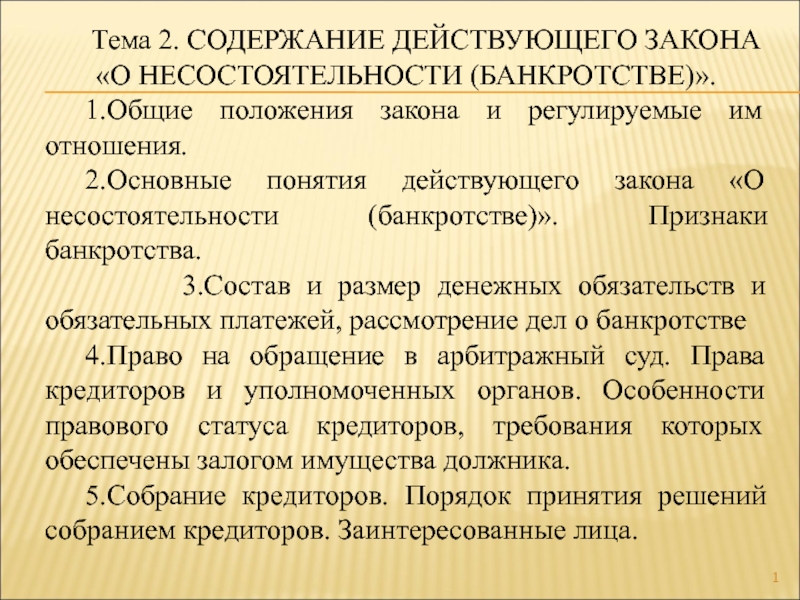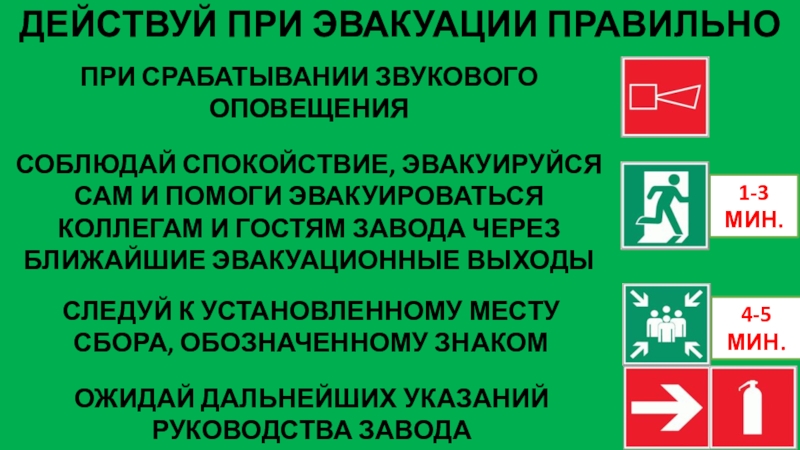Разделы презентаций
- Разное
- Английский язык
- Астрономия
- Алгебра
- Биология
- География
- Геометрия
- Детские презентации
- Информатика
- История
- Литература
- Математика
- Медицина
- Менеджмент
- Музыка
- МХК
- Немецкий язык
- ОБЖ
- Обществознание
- Окружающий мир
- Педагогика
- Русский язык
- Технология
- Физика
- Философия
- Химия
- Шаблоны, картинки для презентаций
- Экология
- Экономика
- Юриспруденция
Status of African-American English
Содержание
- 1. Status of African-American English
- 2. African-American EnglishAfrican-American English (AAE), also known as
- 3. Two major types of AAE:
- 4. African-American Vernacular EnglishAfrican-American Vernacular English (AAVE) is
- 5. African-American Standard EnglishAfrican-American Standard English (AASE) is
- 6. Social context and usageAAE is widely used
- 7. In the legal systemThe United States courts
- 8. In educationEducators traditionally have attempted to eliminate
- 9. Examples of AAE
- 10. Video examples:https://www.youtube.com/watch?v=j7_rihFMB78&t=91s (Don't Judge My African American English)https://www.youtube.com/watch?v=WxbEna_I7PM&t=132s (American English Slang with Will Smith)
- 11. Скачать презентанцию
African-American EnglishAfrican-American English (AAE), also known as Black English in American linguistics, is the set of English dialects primarily spoken by most black people in the United States and many in

